
Nevsky Prospekt is the main thoroughfare and one of the most popular streets in St. Petersburg.
The length of the avenue is about 4.5 kilometers. It stretches from Alexander Garden to Alexander Nevsky Square.
Along Nevsky Prospekt there are many significant objects, some of which are included in the list of attractions of St. Petersburg, including churches and a cathedral, former palaces and mansions, luxury shops and apartment buildings, as well as bridges that run along the line of Nevsky Prospekt. Learn more about Nevsky Prospekt…
Nevsky crosses three reservoirs, and, therefore, on the avenue there are three bridges located on the axis of the street: the Moika River (Green Bridge), the Griboyedov Canal (Kazansky Bridge) and the Fontanka River (Anichkov Bridge).
All three bridges of Nevsky Prospekt are located within the so - called "Front" part of the avenue-the most refined and visited segment of Nevsky Prospekt.
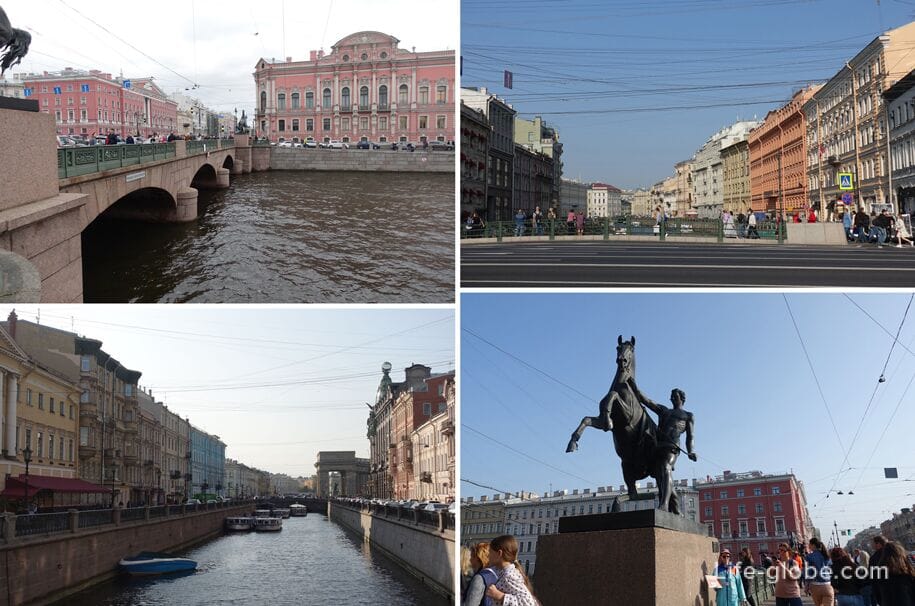
The Green Bridge is located on the axis of Nevsky Prospekt and connects the Kazan and 2nd Admiralty Islands across the Moika River.
The bridge is designed for the movement of vehicles and pedestrians.
The first wooden drawbridge was built in 1716-1717. In 1735, the crossing was repaired, painted green and officially given the name "Green Bridge".
A cast-iron single-span bridge on this site was built in 1808, designed by an engineer and architect of Scottish origin, V. I. Geste.
In 1842, due to the increased traffic on Nevsky Prospekt, the bridge was expanded according to the project of engineer A. D. Gottan.
In 1904-1907, in connection with the laying of tram tracks on Nevsky Prospekt, the bridge was rebuilt and expanded according to the project of engineers V. A. Bers, A. L. Stanovoy and A. P. Pshenitsky and architect L. A. Ilyin.
In the future, the bridge was restored and improved.
Today, the Green Bridge is a single-span metal structure of an arched structure with a length of 30 meters and a width of 38.6 meters in the axes of the railing. The pattern of cast iron railings follows the pattern of the Moika River fence.
On the four sides of the bridge, on the pillars, there are floor lamps with lanterns, decorated with architectural details.

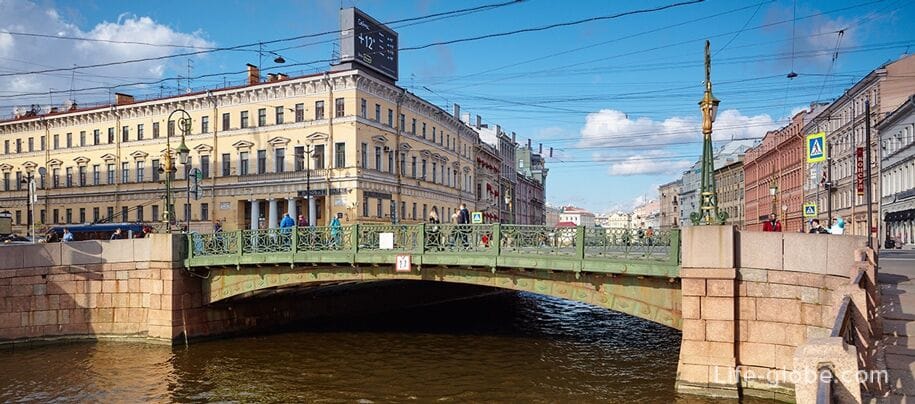

Views from the Green Bridge
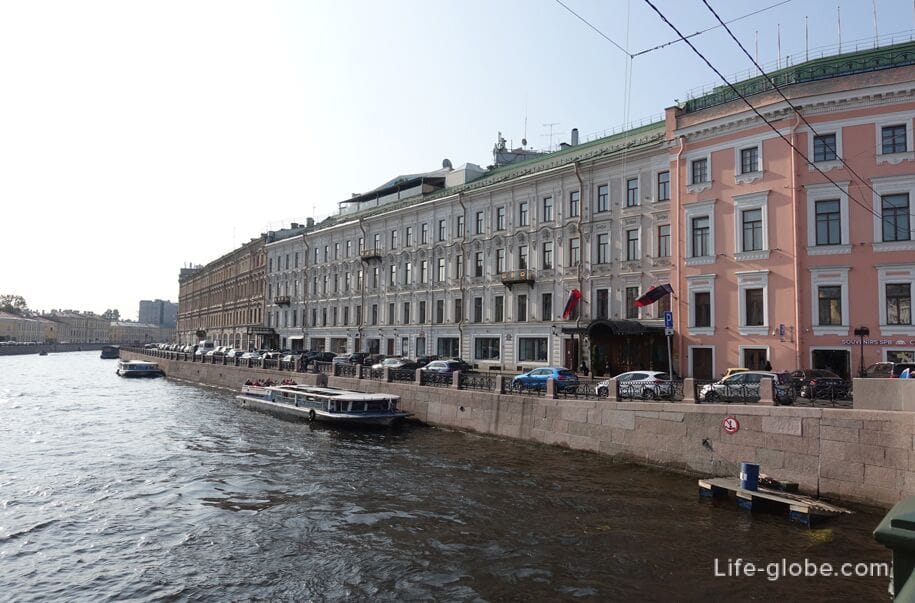
Coordinates of the Green Bridge: 59°56'10"N 30°19'11"E (59.936111, 30.319722).
Near the Green Bridge there are such attractions as: the house-palace of the Eliseevs with the 5-star Talion Imperial Hotel (Nevsky Prospekt 15), the Neumann House (Nevsky Prospekt 18), Stroganov Palace (Nevsky Prospekt 17) and the House of the Dutch Reformed Church (Nevsky Prospekt 20).
The nearest metro stations to the Green Bridgeare: "Admiralteiskaya" and "Nevsky Prospekt". Read more about the Green Bridge...
The Kazan Bridge spans the Griboyedov Canal in the alignment of Nevsky Prospekt, and connects the Kazan and Spassky Islands.
The bridge is designed for the movement of vehicles and pedestrians.
The first wooden bridge in this place existed since 1716. In 1766, the crossing was replaced with a new stone single-span vaulted one.
In 1805-1806, in connection with the construction of the Kazan Cathedral and the redevelopment of the nearby part of Nevsky Prospekt, the bridge was rebuilt, presumably, according to the project of the architect L. I. Rusk.
Subsequently, the bridge was restored and strengthened.
Today, the Kazan Bridge is a single-span brick arch with arches lined with granite. The abutments of the bridge are also faced with granite. The railing is a granite parapet.
The length of the bridge is 17.35 meters, its width is 95 meters, and the width of the bridge with openers is 99 meters. This is the third-widest bridge in St. Petersburg after Blue and Aptekarsky bridges.
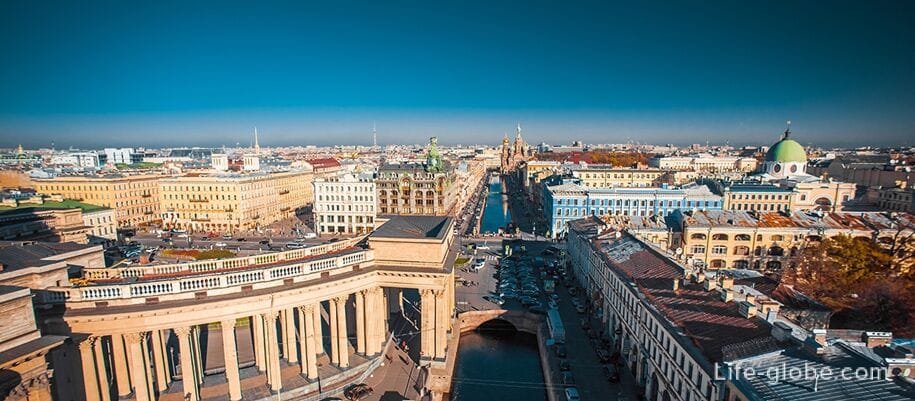
View of the Kazan Bridge from the Italian Bridge
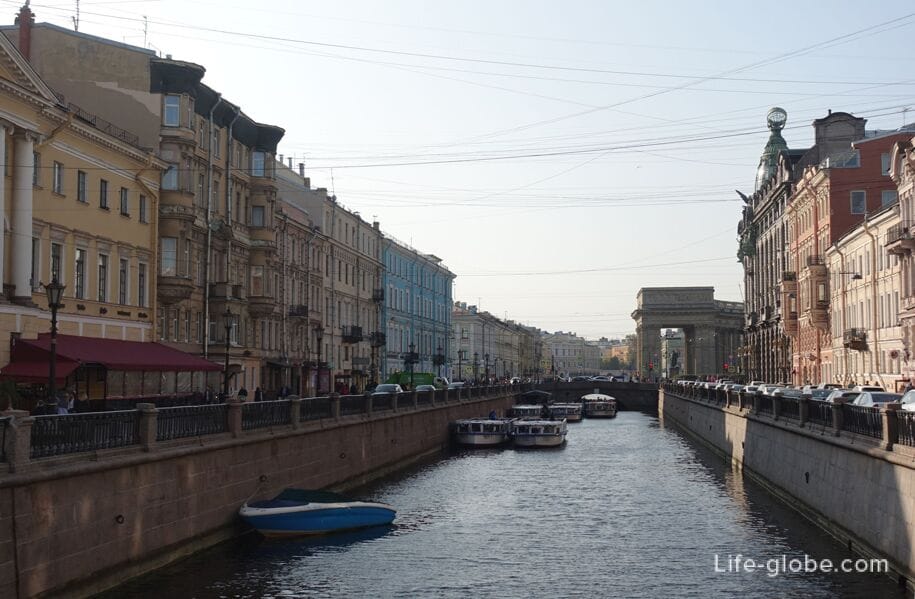
From the Kazan Bridge, you can enjoy stunning views, including the Italian Bridge, the embankments of the Griboyedov Canal and the famous Saved on Blood.
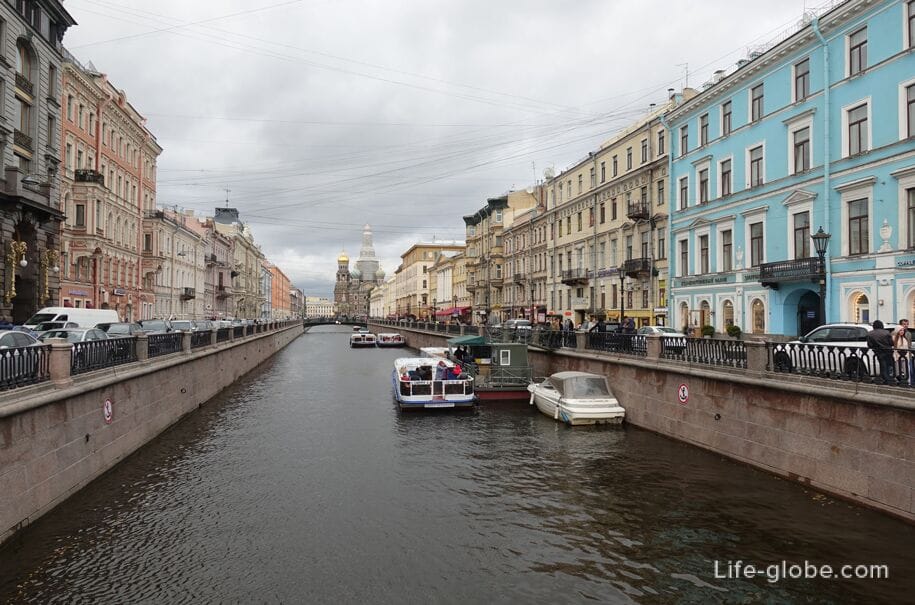
Coordinates of the Kazan Bridge: 59°56'07"N 30°19'34"E (59.935278, 30.326111).
Near the Kazan Bridge there are such attractions as: Kazan Cathedral (Nevsky Prospekt 25x), Singer House / The House of the Book (Nevsky Prospekt 28), the House of the Milyutins (Nevsky Prospekt 27-29), the House of Engelhardt (Nevsky Prospekt 30), the Basilica of St. Catherine of Alexandria (Nevsky Prospekt 32-34) and the house of the Jesuit Order (Italian Street 1 / Griboyedov Canal Embankment 8).
Nearest metro stations: "Nevsky Prospekt" and "Gostiny Dvor".
Anichkov Bridge is one of the most famous bridges in St. Petersburg.
The bridge is designed for the movement of vehicles and pedestrians. It runs through the Fontanka River and connects the Spassky and Bezymyanny Islands.
The first wooden bridge was built in 1712-1714 and was the first bridge over the Fontanka River, which at that time was called Erik or Unnamed Erik.
Subsequently, the bridge was rebuilt and strengthened several times.
The design of the Anichkov Bridge, which can be seen today, was born in 1841 according to the project of engineer Major Ivan Fedorovich Buttats. The project of the bridge was approved by Emperor Nicholas I.
Today, the Anichkov Bridge is a three-span structure in the form of three gentle arches, laid out of brick, on stone supports and faced with granite. A cast-iron fence of artistic casting is installed on the bridge.
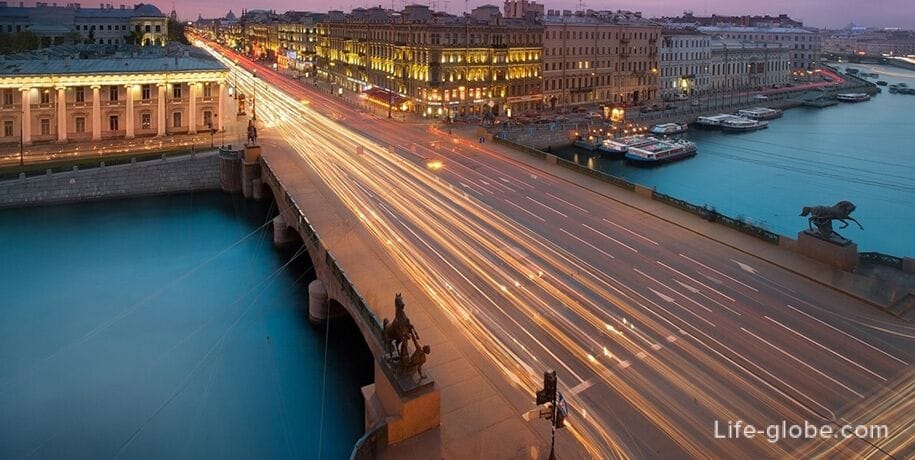
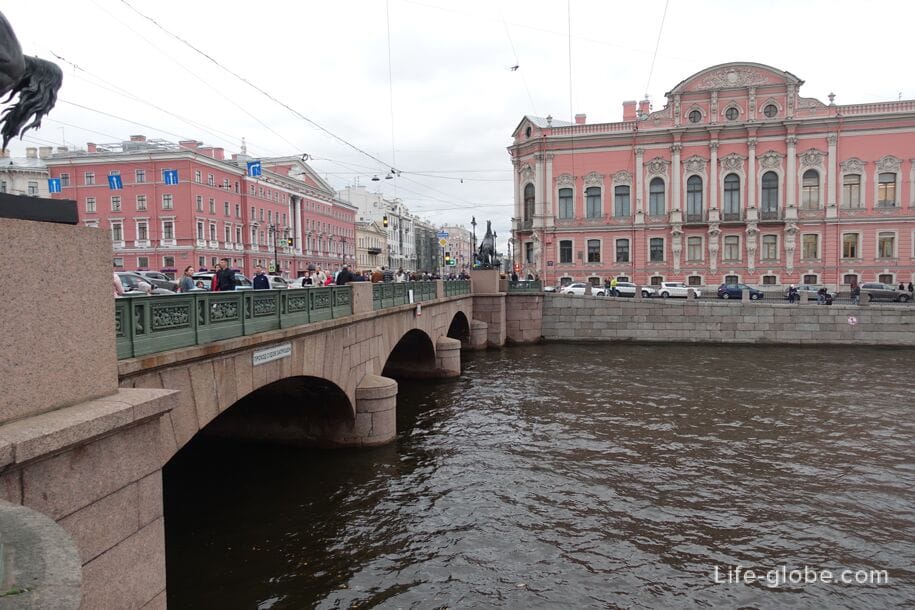
The bridge is decorated with four recognizable sculptural compositions - "The Taming of the horse by man" or simply "The Taming of the Horse", which are installed on both sides of the bridge on granite monumental pedestals.
The composite art groups were created by the baron and sculptor Peter Karlovich Klodt and installed on the bridge in 1841-1850. Learn more about the Anichkov Bridge…
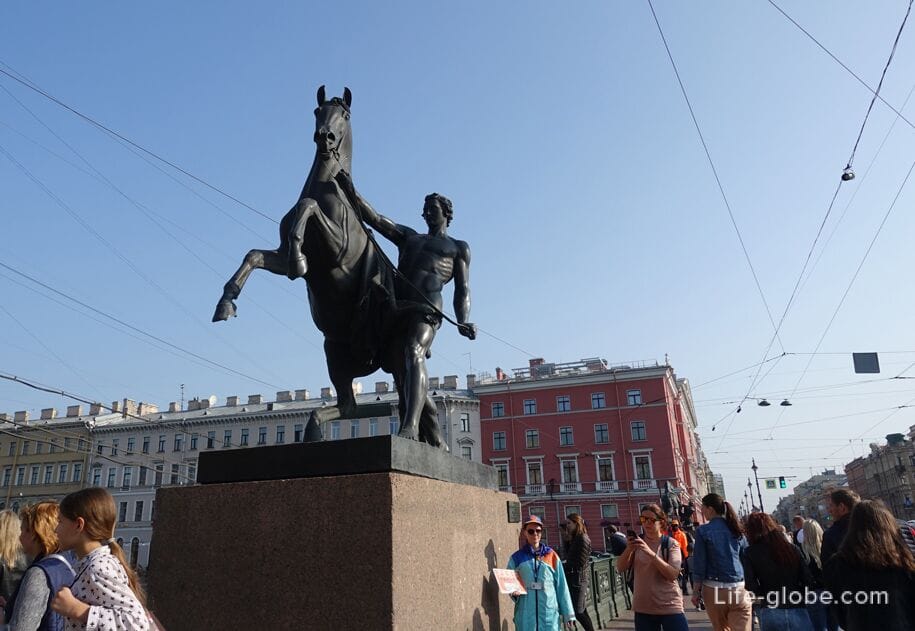
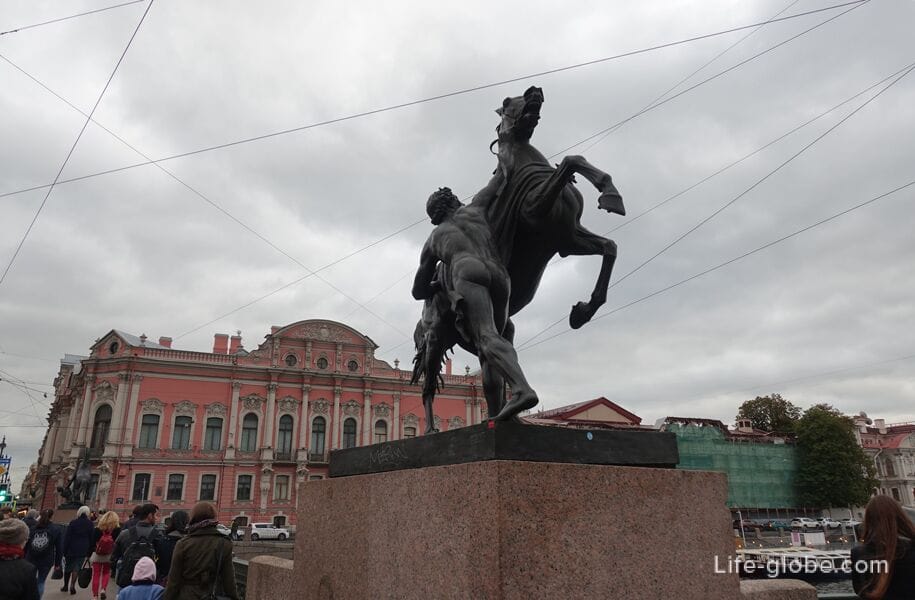
Views from the Anichkov Bridge

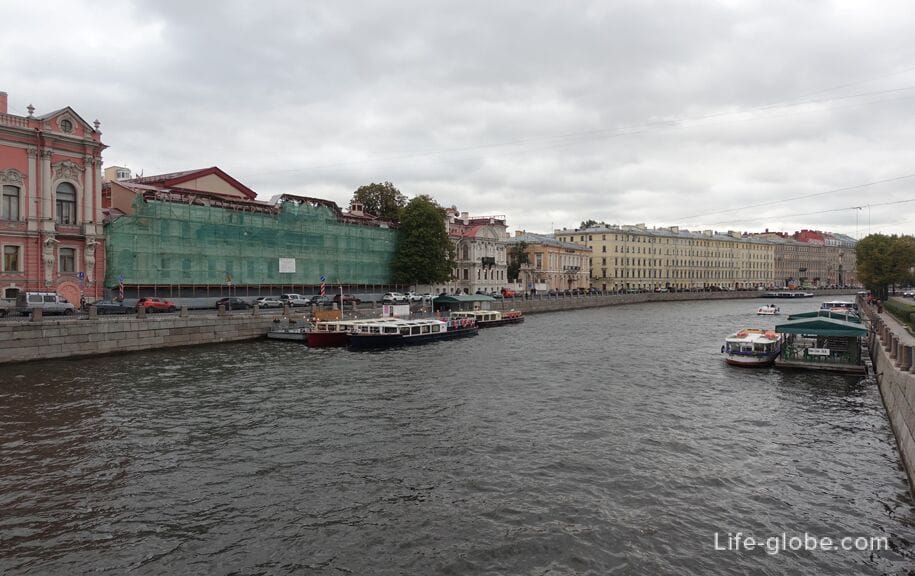
Coordinates of the Anichkov Bridge: 59°56'00"N 30°20'36"E (59.933333, 30.343333).
Near the Anichkov Bridge there are such attractions as: Anichkov Palace with adjoining garden (Nevsky Prospekt, 39), Ostrovsky square, the house of the merchant Sharova / house Likhachev (Nevsky Prospekt 66), a memorial "Blockade the hole", the Faberge Museum (the Fontanka river embankment 21), Beloselsky-Belozersky Palace (Nevsky Prospekt, 41), the Literary house / house Lopatina (Nevsky Prospekt, 68), the building of the national library (the Fontanka river embankment 36) and the Sheremetev Palace / the Fountain house (the Fontanka river embankment, 34).
Nearest metro stations: "Nevsky Prospekt", "Gostiny Dvor" and "Mayakovskaya".
All accommodation facilities in St. Petersburg, including in the city center and on Nevsky Prospekt, can be viewed and booked here